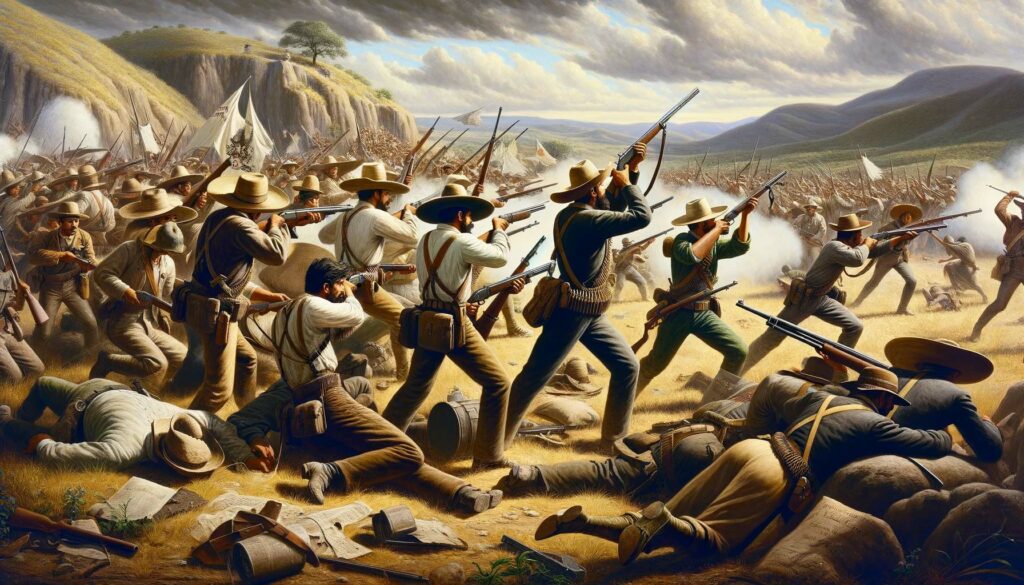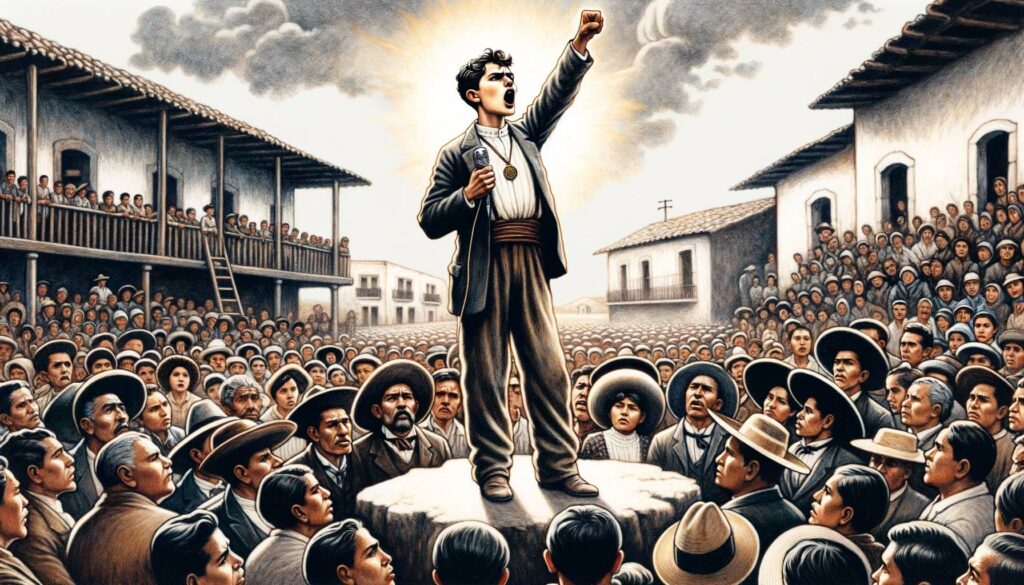Explore the Cristero War (1926-1929) in Mexico: its causes, key figures, major battles, and impacts in this historical analysis.
The Cristero War (1926-1929), also known as La Cristiada, was a pivotal conflict in Mexico’s history, rooted in the struggle between the secularist, anti-clerical policies of the Mexican government and the country’s deeply entrenched Catholic faithful. This internal war not only tested the strength of Mexico’s post-revolutionary secular state but also highlighted the profound divisions within Mexican society over religious freedom and governance. Through an exploration of its causes, key participants, decisive moments, and major battles, this article seeks to shed light on the complexities of the Cristero War and its lasting impacts on Mexico and beyond.

What Were the Reasons for the Cristero War in Mexico (1926-1929)
The Cristero War’s origins can be traced to the Mexican Revolution (1910-1920) and the subsequent enactment of the 1917 Constitution. This constitution introduced radical anti-clerical laws, including restrictions on religious orders, the secularization of education, and limitations on the church’s ownership of property. However, it was under President Plutarco Elías Calles that these laws were stringently enforced through the Calles Law (1926), igniting widespread outrage among the Catholic population. The enforcement of these laws, including the expulsion of foreign priests, the closure of religious schools, and the prohibition of public religious expressions, was perceived as a direct attack on the Catholic Church and its followers. The government’s attempt to control religious institutions and suppress Catholic worship practices led to a powerful backlash, culminating in armed rebellion. The Cristero War was thus a response to the perceived threat to religious freedom and an attempt by the faithful to protect their religious rights and identity against a state-imposed secularism.
Who Was Involved in the Cristero War in Mexico (1926-1929)
The Cristero War was primarily a conflict between the Mexican government and the Cristeros, a rebel force composed mainly of devout Catholics. The Mexican government, led by President Plutarco Elías Calles and supported by the federal army and local militias, was determined to enforce secularization and reduce the power of the Catholic Church. On the opposing side, the Cristeros were civilians who took up arms to defend their religious rights, driven by a fervent belief in the Catholic cause. Key figures among the Cristeros included leaders such as Enrique Gorostieta, a former Mexican Army officer who became the Cristero forces’ strategic and military leader, and José Sánchez del Río, a young martyr whose defiance became a symbol of resistance. Additionally, the conflict indirectly involved the Catholic Church hierarchy, which, while officially condemning the violence, was seen as a moral and spiritual supporter of the Cristero cause. International actors, including the United States, also played a role, with the U.S. Ambassador Dwight Morrow mediating the conflict’s resolution.
The Leaders of the Cristero War in Mexico (1926-1929)
Among the Cristero leaders, Enrique Gorostieta stands out for his transformation from a mercenary with little personal stake in the conflict’s religious aspects to a committed leader of the Cristero rebellion. His military expertise significantly improved the Cristero forces’ effectiveness. Another notable leader was Father Miguel Agustín Pro, a Jesuit priest executed by the government, whose death became a rallying cry for the Cristero cause. On the government side, President Calles was the principal architect of the anti-clerical policies that sparked the rebellion. His determination to diminish the church’s influence in Mexico set the stage for the conflict. The leadership on both sides demonstrated a complex mix of motivations, from devout religious fervor to political pragmatism, shaping the conflict’s course and its eventual resolution.
Was There a Decisive Moment?
The decisive moment leading to the Cristero War was the enactment and strict enforcement of the Calles Law in 1926. This law, part of President Calles’ broader effort to secularize Mexican society and curb the power of the Catholic Church, directly challenged the religious practices and freedoms of Mexico’s Catholic majority. The government’s aggressive measures to enforce these laws, including arresting priests and closing religious schools, sparked widespread protests and acts of civil disobedience. The culmination of these tensions into armed conflict signaled a critical juncture where the accumulated grievances of the Catholic population transformed into a nationwide rebellion. This moment underscored the depth of the divide between the secularist ambitions of the Mexican state and the religious convictions of its people, setting the stage for the violent struggle that followed.
What Were the Major Battles?
The Cristero War was characterized by numerous skirmishes, raids, and major battles across central and western Mexico. One of the early significant confrontations was the Battle of Tepatitlán in 1927, where Cristero forces demonstrated their growing strength and tactical sophistication. Another key battle was the Capture of Guadalajara in 1929, a strategic victory that boosted the Cristeros’ morale and legitimacy. The conflict was marked not only by conventional warfare but also by guerrilla tactics, with Cristero forces leveraging their knowledge of local terrain. Leaders like Gorostieta employed these tactics to great effect, striking federal troops and supply lines, then melting away before significant counterattacks could be launched. The major battles of the Cristero War underscored the Cristeros’ resilience and the federal army’s challenges in suppressing the uprising, contributing to the conflict’s prolonged nature and eventual negotiation for peace.
Was There a Turning Point?
A turning point in the Cristero War came in 1929, following a combination of military, political, and diplomatic pressures. Despite the Cristeros’ initial successes, the Mexican government’s superior resources and the lack of a decisive military victory for either side led to a stalemate. The intervention of the U.S. Ambassador Dwight Morrow, who mediated negotiations between the Mexican government and the Catholic Church, facilitated a path toward peace. The agreement, which promised leniency for the rebels and a relaxation of anti-clerical laws, marked a significant shift in the conflict. While not all Cristero leaders agreed with the settlement, this turning point effectively ended large-scale hostilities and paved the way for the conflict’s resolution.

The Consequences of the Cristero War in Mexico (1926-1929)
The Cristero War had profound and lasting impacts on Mexico. The conflict resulted in the loss of tens of thousands of lives and deepened societal divisions. In its aftermath, the government agreed to relax some of its anti-clerical policies, but the church was significantly weakened in public life. The war also contributed to the shaping of Mexican identity, highlighting the complex relationship between religion and state. On an international level, the Cristero War drew attention to the challenges of enforcing secularism in a deeply religious society. For the Catholic Church, the conflict underscored the need for a more diplomatic approach to dealing with state governments. The Cristero War remains a poignant reminder of the potential for religious conflict to shape national policies and identities.
The Cristero War was a defining conflict in Mexico’s post-revolutionary history, reflecting the deep rifts within Mexican society over the role of religion in public life. It highlighted the limits of state power in dictating religious practice and the strength of popular resistance against policies perceived as oppressive. The war’s legacy is complex, embodying both the tragedy of civil conflict and the enduring struggle for religious and civil liberties. Understanding the Cristero War is essential for comprehending the broader dynamics of church-state relations in Mexico and the ongoing negotiation between religious faith and secular governance in modern nation-states.
Back to the Wars section